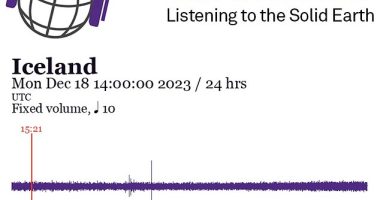CERN has hit headlines today as it countdowns to the re-launch of the Large Hadron Collider – the world’s largest “Big Bang” atom-smasher.
The mega-machine will run for the next four years so scientists can research the extremes of particle physics to discover monumental breakthroughs about the universe – as they did with the “God particle” 10 years ago.
Who funds CERN?
The European Center for Nuclear Research, CERN for short, is funded by its 23 member states as well as some non-member states.
The CERN convention was signed in 1953 by the 12 original members but has since been joined by various other European countries.
The member states make contributions to the capital and operating costs of the landmark lab’s programmes – but also have responsibility in important decisions about the organisation.
Japan and the US hold Observer status with respect to the Large Hadron Collider, as do international organisations such as the European Union and UNESCO.
The Observer status of the Russian Federation is suspended in accordance with the CERN Council Resolution of 8 March 2022.
Funding agencies from all the types of states above are responsible for the financing, construction and operation of the experiments at CERN.
Most of the budget is spent on building machines such as the Large Hadron Collider and it only partially contributes to the cost of the experiments.
In 1997, the US signed an agreement to contribute $531million to the LHC project, which cost around $4.75billion in total.
23 MEMBER STATES OF CERN
- Austria
- Belgium
- Bulgaria
- Czech Republic
- Denmark
- Finland
- France
- Germany
- Greece
- Hungary
- Israel
- Italy
- Netherlands
- Norway
- Poland
- Portugal
- Romania
- Serbia
- Slovak Republic
- Spain
- Sweden
- Switzerland
- United Kingdom
As well as the 23 members, there are three Associate Member States in the pre-stage to membership, including Cyprus, Estonia and Slovenia.
Croatia, India, Latvia, Lithuania, Pakistan, Turkey and Ukraine are all Associate Member States as well.
Where is CERN located?
The headquarters of CERN is based in Geneva on the Franco-Swiss border.
One hundred meters underground, lies the LHC – a vast, 17 mile ring of superconducting magnets, made up of a chain of different structures.
Inside the LHC, two high-energy particle beams travel at close to the speed of light before they are made to collide.
Most read in The Sun
Thousands of magnets propel the beams around the accelerator, all of different varieties and sizes, and they have to be kept at -456.34 Fahrenheit – colder than outer space – to run super efficiently.
The experiments in the LHC are so precise, scientists have said the particles are so tiny making them collide is like firing two needles over six miles apart to meet halfway.
Visitors cannot actually access the tunnel of the Large Hadron Collider, but you can head to the CERN headquarters in Geneva to learn a lot about particle physics.
Guided tours of the wider laboratory are completely free, although reservation is required and places are limited.
Underground tours of detectors are very limited but there is plenty to see elsewhere.


As it lies on the border, CERN has two main sites – one in France and the other in Switzerland.
The visitor reception can be found at the Meyrin site in Switzerland.









